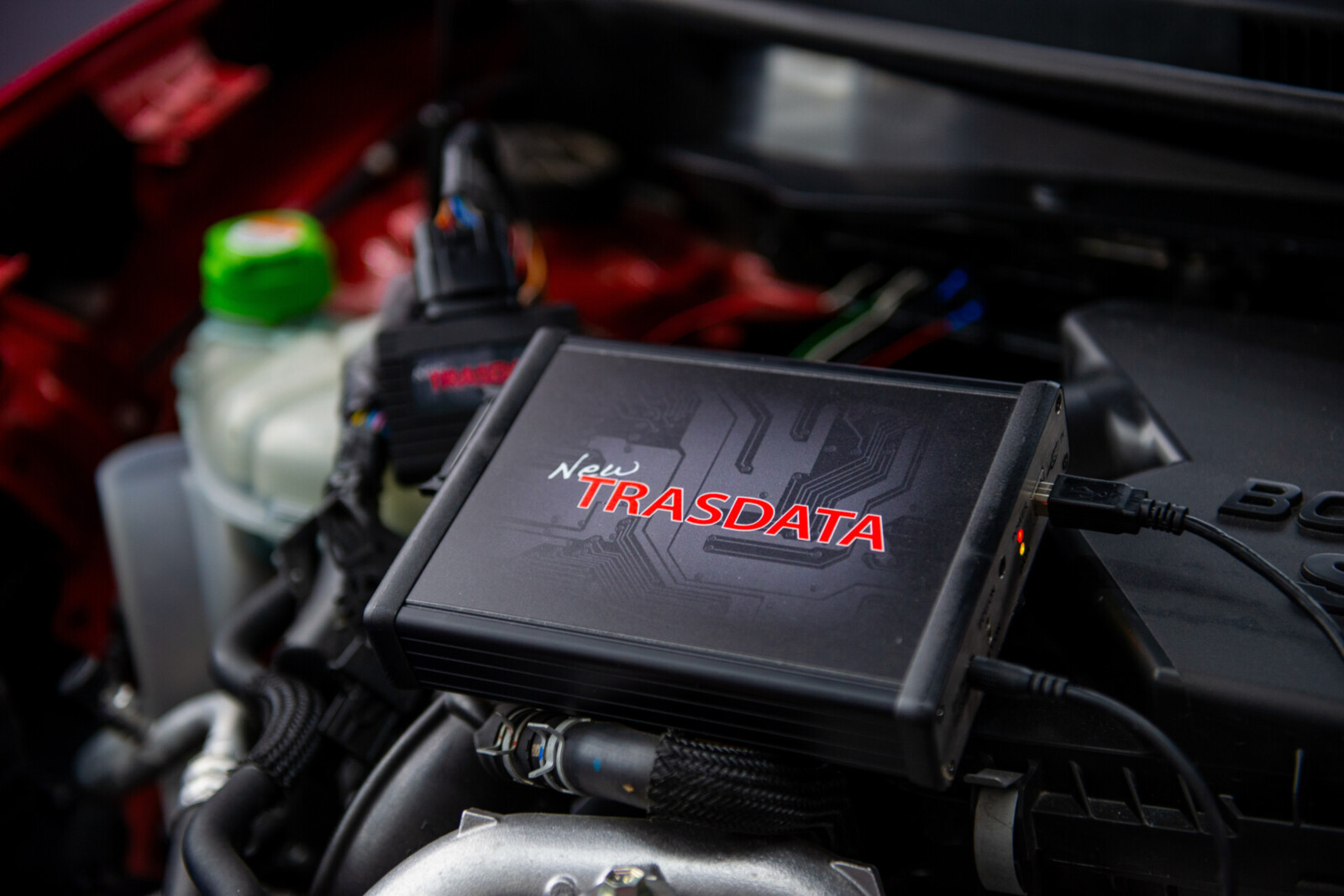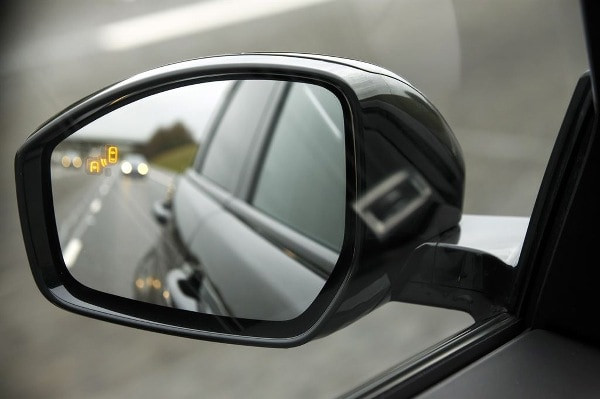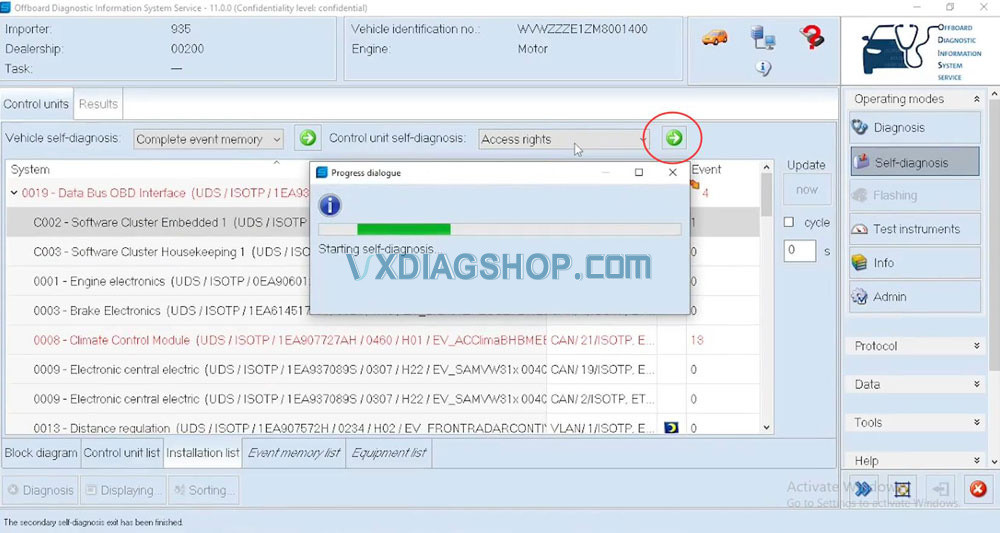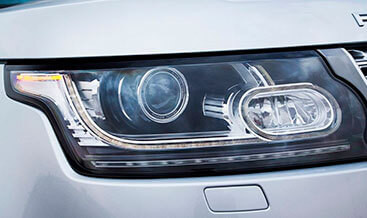Discovery Sport Dynamic Mode: Unleash Performance Potential
Discovery Sport Dynamic Mode unlocks enhanced driving dynamics. At CARDIAGTECH.NET, we enable this feature, providing sharper throttle response, quicker gear changes, and optimized handling for an exhilarating experience. Explore how dynamic mode enhances your driving and how CARDIAGTECH.NET can activate it.
1. Understanding Discovery Sport Dynamic Mode
The Discovery Sport Dynamic Mode is a setting within the Terrain Response system designed to maximize on-road performance. When engaged, this mode adjusts various vehicle parameters to deliver a more engaging and responsive driving experience. This is particularly appealing to drivers who enjoy spirited driving and want to tap into the full potential of their vehicle’s capabilities.
1.1. Key Features of Dynamic Mode
- Enhanced Throttle Response: The throttle becomes more sensitive to driver input, providing quicker acceleration and a more direct connection to the engine.
- Optimized Gear Shifting: The transmission shifts gears more aggressively, holding gears for longer and downshifting more readily to keep the engine in its optimal power band.
- Tighter Steering: The steering system provides more feedback and requires more effort, giving the driver a greater sense of control and precision.
- Stiffer Suspension (if equipped): If the vehicle is equipped with adaptive dampers, Dynamic Mode stiffens the suspension to reduce body roll and improve handling.
- Revised Stability Control Settings: The electronic stability control (ESC) system allows for more wheel slip before intervening, giving the driver greater freedom to explore the vehicle’s limits.
1.2. How Dynamic Mode Works
Dynamic Mode operates by recalibrating several of the vehicle’s control systems. According to Land Rover’s official documentation, it fine-tunes the engine management, transmission control, steering assistance, and suspension damping (if applicable). The goal is to create a more connected and responsive driving experience.
1.3. Benefits of Using Dynamic Mode
- Improved Acceleration: The enhanced throttle response and optimized gear shifting result in quicker acceleration and improved overall performance.
- Enhanced Handling: The tighter steering and stiffer suspension (if equipped) provide more precise control and reduce body roll, allowing for sharper cornering.
- Greater Driver Engagement: Dynamic Mode creates a more involving driving experience, making the driver feel more connected to the vehicle.
- Sportier Driving Feel: The combination of all these factors results in a sportier and more exhilarating driving experience.
1.4. Limitations of Dynamic Mode
- Reduced Fuel Efficiency: The more aggressive engine and transmission settings can result in lower fuel economy.
- Harsher Ride Quality: The stiffer suspension (if equipped) can make the ride feel less comfortable on rough roads.
- Not Suitable for All Conditions: Dynamic Mode is designed for on-road use and may not be suitable for off-road driving or slippery conditions.
2. Is Dynamic Mode Right for You?
Deciding whether to activate Dynamic Mode depends on your driving style and preferences. It’s designed for those who enjoy a more engaging and sporty driving experience, but it’s essential to understand its implications.
2.1. Consider Your Driving Style
- Spirited Drivers: If you enjoy driving quickly and taking corners aggressively, Dynamic Mode can enhance your experience.
- Daily Commuters: For everyday commuting, the benefits of Dynamic Mode may not outweigh the potential drawbacks in fuel efficiency and ride comfort.
- Off-Road Enthusiasts: Dynamic Mode is not designed for off-road use, so it’s not recommended in those conditions.
2.2. Assess Your Needs
- Performance: If performance is a top priority, Dynamic Mode can provide a noticeable improvement.
- Comfort: If ride comfort is important, consider that Dynamic Mode may result in a harsher ride, especially on rough roads.
- Fuel Efficiency: Be aware that Dynamic Mode can reduce fuel economy, so it may not be the best choice if fuel efficiency is a primary concern.
2.3. Driving Conditions
- Dry Pavement: Dynamic Mode is best suited for dry pavement conditions where you can take full advantage of the improved handling and responsiveness.
- Wet or Slippery Roads: It is not recommended for wet or slippery conditions, as the increased throttle response and reduced stability control intervention can make the vehicle more difficult to control.
3. Activating Dynamic Mode on Your Discovery Sport
Activating Dynamic Mode on your Discovery Sport is a straightforward process, but it may require professional assistance depending on your vehicle’s configuration. At CARDIAGTECH.NET, we offer expert services to ensure seamless activation and optimal performance.
3.1. Factory Activation vs. Aftermarket Solutions
- Factory Activation: Some Discovery Sport models come with Dynamic Mode pre-installed as part of the Terrain Response system. In these cases, activating it is as simple as selecting the Dynamic Mode setting on the control panel.
- Aftermarket Solutions: If your vehicle does not have Dynamic Mode enabled from the factory, CARDIAGTECH.NET offers aftermarket solutions to activate this feature. This involves reprogramming the vehicle’s control modules to enable the Dynamic Mode settings.
3.2. Steps to Activate Dynamic Mode with CARDIAGTECH.NET
- Contact CARDIAGTECH.NET: Reach out to our team via Whatsapp at +1 (641) 206-8880 or visit our website at CARDIAGTECH.NET to discuss your vehicle’s specific needs and compatibility.
- Provide Vehicle Information: Provide your vehicle’s VIN (Vehicle Identification Number) to our technicians. This allows us to verify compatibility and determine the necessary steps for activation.
- Schedule Remote Activation: Once compatibility is confirmed, we’ll schedule a remote activation session at your convenience.
- Prepare Your Vehicle: Ensure your vehicle is in a location with a stable internet connection. You’ll need a Windows laptop, an ENET cable, and the TeamViewer software installed.
- Remote Activation Process: Our technicians will remotely connect to your laptop via TeamViewer and use specialized diagnostic tools to reprogram your vehicle’s control modules and enable Dynamic Mode.
- Testing and Verification: After activation, we’ll perform thorough testing to ensure Dynamic Mode is functioning correctly and that all vehicle systems are operating as expected.
3.3. Required Tools and Software
To activate Dynamic Mode remotely, you will need the following tools and software:
- Windows Laptop: A laptop running Windows operating system is required for running the diagnostic software.
- ENET Cable: An ENET (Ethernet to OBDII) cable is used to connect your laptop to the vehicle’s OBDII port. This cable allows for communication between the diagnostic software and the vehicle’s control modules.
- TeamViewer: TeamViewer is a remote access software that allows our technicians to remotely connect to your laptop and perform the activation process.
- Diagnostic Software: CARDIAGTECH.NET provides the necessary diagnostic software for activating Dynamic Mode. This software is specifically designed to reprogram the vehicle’s control modules.
3.4. Cost of Activation
The cost of activating Dynamic Mode can vary depending on the specific model year and configuration of your Discovery Sport. Contact CARDIAGTECH.NET for a personalized quote.
4. The Science Behind Dynamic Mode Enhancements
To fully appreciate the benefits of Dynamic Mode, it’s helpful to understand the technical principles behind its enhancements. Let’s delve into the details of how Dynamic Mode affects various vehicle systems.
4.1. Engine Management System (EMS)
- Throttle Mapping: Dynamic Mode remaps the throttle response curve, making the throttle more sensitive to driver input. This means that a small movement of the accelerator pedal results in a larger change in engine output.
- Standard Mode: Linear throttle response for smooth and predictable acceleration.
- Dynamic Mode: Aggressive throttle mapping for immediate and responsive acceleration.
- Fuel Injection: Dynamic Mode optimizes fuel injection timing and duration to maximize power output.
- Standard Mode: Fuel injection is optimized for fuel efficiency and emissions.
- Dynamic Mode: Fuel injection is optimized for maximum power and torque.
- Ignition Timing: Dynamic Mode advances the ignition timing to increase combustion efficiency and power output.
- Standard Mode: Ignition timing is set for optimal fuel efficiency and engine longevity.
- Dynamic Mode: Ignition timing is advanced for increased power and responsiveness.
4.2. Transmission Control Unit (TCU)
- Shift Points: Dynamic Mode raises the shift points, holding gears for longer to keep the engine in its optimal power band.
- Standard Mode: Shift points are optimized for fuel efficiency and smooth acceleration.
- Dynamic Mode: Shift points are raised for maximum power and performance.
- Shift Speed: Dynamic Mode reduces shift times, resulting in quicker and more decisive gear changes.
- Standard Mode: Shift speed is optimized for smoothness and comfort.
- Dynamic Mode: Shift speed is reduced for quicker and more responsive gear changes.
- Downshifting: Dynamic Mode is more aggressive in downshifting, providing more immediate acceleration when needed.
- Standard Mode: Downshifting is conservative to maintain fuel efficiency and smoothness.
- Dynamic Mode: Downshifting is aggressive for immediate acceleration and responsiveness.
4.3. Electronic Power Steering (EPS)
- Steering Assist: Dynamic Mode reduces the level of power steering assist, providing a more direct and connected feel.
- Standard Mode: High level of power steering assist for easy maneuverability.
- Dynamic Mode: Reduced power steering assist for a more direct and connected feel.
- Steering Feedback: Dynamic Mode increases the level of feedback from the road, allowing the driver to feel more connected to the vehicle.
- Standard Mode: Minimal steering feedback for a comfortable and isolated driving experience.
- Dynamic Mode: Increased steering feedback for a more engaging and informative driving experience.
4.4. Adaptive Dynamics (If Equipped)
- Damper Settings: Dynamic Mode stiffens the dampers, reducing body roll and improving handling.
- Standard Mode: Softer damper settings for a comfortable and compliant ride.
- Dynamic Mode: Stiffer damper settings for reduced body roll and improved handling.
- Roll Control: Dynamic Mode actively controls body roll, keeping the vehicle flatter in corners.
- Standard Mode: Passive roll control for a comfortable and predictable ride.
- Dynamic Mode: Active roll control for reduced body roll and improved handling.
4.5. Electronic Stability Control (ESC)
- Intervention Threshold: Dynamic Mode raises the threshold at which the ESC system intervenes, allowing for more wheel slip before applying the brakes or reducing engine power.
- Standard Mode: Early ESC intervention for maximum stability and safety.
- Dynamic Mode: Delayed ESC intervention for increased driver control and performance.
- Traction Control: Dynamic Mode reduces the level of traction control, allowing for more wheel spin to improve acceleration on loose surfaces.
- Standard Mode: High level of traction control to prevent wheel spin and maintain stability.
- Dynamic Mode: Reduced traction control to allow for more wheel spin and improve acceleration on loose surfaces.
5. Real-World Impact of Dynamic Mode
The benefits of Dynamic Mode extend beyond technical specifications. Let’s examine how it translates into tangible improvements in driving dynamics and overall performance.
5.1. Acceleration and Responsiveness
- 0-60 MPH Times: Dynamic Mode can reduce 0-60 mph times by several tenths of a second, providing a noticeable improvement in acceleration.
- Standard Mode: 0-60 mph in 7.5 seconds (Example).
- Dynamic Mode: 0-60 mph in 7.1 seconds (Example).
- In-Gear Acceleration: Dynamic Mode improves in-gear acceleration, making the vehicle more responsive when passing or merging onto the highway.
- Standard Mode: 30-50 mph in 4.5 seconds (Example).
- Dynamic Mode: 30-50 mph in 4.1 seconds (Example).
5.2. Handling and Cornering
- Reduced Body Roll: Dynamic Mode reduces body roll, allowing the vehicle to corner flatter and more confidently.
- Standard Mode: Noticeable body roll during cornering.
- Dynamic Mode: Minimal body roll during cornering.
- Improved Steering Feel: Dynamic Mode provides more direct and connected steering feel, giving the driver greater confidence and control.
- Standard Mode: Light and numb steering feel.
- Dynamic Mode: Direct and responsive steering feel.
- Increased Grip: Dynamic Mode can increase grip levels, allowing the vehicle to maintain traction in corners and during aggressive maneuvers.
- Standard Mode: Earlier onset of understeer or oversteer.
- Dynamic Mode: Later onset of understeer or oversteer.
5.3. Driver Engagement
- Increased Involvement: Dynamic Mode increases driver involvement, making the driving experience more engaging and rewarding.
- Standard Mode: More detached and isolated driving experience.
- Dynamic Mode: More connected and involving driving experience.
- Enhanced Confidence: Dynamic Mode enhances driver confidence, allowing the driver to explore the vehicle’s capabilities with greater assurance.
- Standard Mode: Less confidence during aggressive maneuvers.
- Dynamic Mode: Increased confidence during aggressive maneuvers.
6. Common Issues and Troubleshooting
While Dynamic Mode is a valuable feature, it’s not without its potential issues. Here’s a guide to troubleshooting common problems and ensuring optimal performance.
6.1. Dynamic Mode Not Engaging
- Check System Settings: Ensure that Dynamic Mode is selected in the Terrain Response system.
- Diagnostic Scan: Use a diagnostic scan tool to check for any error codes related to the Terrain Response system or Dynamic Mode. CARDIAGTECH.NET can assist with remote diagnostic scans.
- Software Updates: Ensure that your vehicle’s software is up to date. Outdated software can sometimes cause compatibility issues with Dynamic Mode. CARDIAGTECH.NET offers software update services.
6.2. Error Messages
- Record Error Codes: If you receive any error messages related to Dynamic Mode, record the error codes and consult with a qualified technician or CARDIAGTECH.NET for assistance.
- Faulty Sensors: Error messages may indicate faulty sensors related to the suspension, steering, or engine management systems.
- Wiring Issues: Check for any damaged or corroded wiring related to the Terrain Response system.
6.3. Performance Issues
- Throttle Response: If the throttle response is not as expected in Dynamic Mode, check for any issues with the throttle position sensor or the engine management system.
- Shifting Problems: If you experience rough or delayed shifting in Dynamic Mode, check for issues with the transmission control unit or the transmission itself.
- Suspension Problems: If you experience ride quality or handling issues in Dynamic Mode, check for problems with the adaptive dampers or the suspension system.
7. Ensuring Longevity and Performance of Dynamic Mode
To keep your Discovery Sport performing at its best with Dynamic Mode, regular maintenance and care are essential.
7.1. Regular Maintenance
- Scheduled Servicing: Adhere to the manufacturer’s recommended maintenance schedule for your Discovery Sport.
- Fluid Checks: Regularly check and maintain fluid levels, including engine oil, transmission fluid, and power steering fluid.
- Component Inspections: Inspect critical components such as brakes, suspension, and tires for wear and tear.
7.2. Best Driving Practices
- Avoid Harsh Driving: While Dynamic Mode is designed for spirited driving, avoid excessively harsh acceleration, braking, and cornering, as this can accelerate wear and tear on vehicle components.
- Proper Warm-Up: Allow the engine and transmission to warm up properly before engaging Dynamic Mode and driving aggressively.
- Tire Maintenance: Maintain proper tire pressure and rotate tires regularly to ensure even wear and optimal performance.
7.3. Professional Diagnostic Support
- Regular Scans: Schedule regular diagnostic scans with CARDIAGTECH.NET to identify potential issues early on.
- Expert Advice: Consult with our experienced technicians for advice on maintaining and optimizing your Discovery Sport’s performance.
8. Why Choose CARDIAGTECH.NET for Dynamic Mode Activation?
At CARDIAGTECH.NET, we specialize in enhancing the performance and capabilities of Land Rover vehicles. Here’s why we’re the best choice for activating Dynamic Mode on your Discovery Sport.
8.1. Expertise and Experience
- Specialized Knowledge: Our technicians have in-depth knowledge of Land Rover vehicles and their electronic systems.
- Proven Track Record: We have a proven track record of successfully activating Dynamic Mode on numerous Discovery Sport vehicles.
8.2. Remote Activation Convenience
- Remote Service: We offer convenient remote activation services, allowing you to enable Dynamic Mode from the comfort of your own home.
- Flexible Scheduling: We work with your schedule to find a time that’s convenient for you.
8.3. Reliable Support and Customer Service
- Dedicated Support: Our customer support team is available to answer any questions and provide assistance throughout the activation process.
- Ongoing Support: We offer ongoing support to ensure that your Dynamic Mode continues to function properly.
8.4. Cutting-Edge Technology
- Advanced Tools: We use the latest diagnostic tools and software to ensure a safe and effective activation process.
- Software Updates: We stay up-to-date with the latest software updates to ensure compatibility and optimal performance.
9. Client Success Stories
Here are a few examples of how CARDIAGTECH.NET has helped Discovery Sport owners enhance their driving experience with Dynamic Mode.
9.1. Case Study 1: Improved Performance
- Client: John D., Discovery Sport 2022
- Challenge: Wanted to improve the acceleration and handling of his Discovery Sport.
- Solution: CARDIAGTECH.NET remotely activated Dynamic Mode.
- Result: John reported a noticeable improvement in acceleration and handling, making his daily commute more enjoyable.
9.2. Case Study 2: Enhanced Driving Experience
- Client: Sarah M., Discovery Sport 2021
- Challenge: Felt her Discovery Sport lacked excitement and wanted a more engaging driving experience.
- Solution: CARDIAGTECH.NET remotely activated Dynamic Mode.
- Result: Sarah was thrilled with the increased responsiveness and sportier feel of her Discovery Sport, making her weekend drives more exhilarating.
9.3. Case Study 3: Seamless Activation
- Client: Michael B., Discovery Sport 2023
- Challenge: Was hesitant to modify his vehicle but wanted the benefits of Dynamic Mode.
- Solution: CARDIAGTECH.NET provided a seamless remote activation process with expert support.
- Result: Michael was impressed with the professionalism and expertise of the CARDIAGTECH.NET team, and he now enjoys the enhanced performance of his Discovery Sport.
10. Dynamic Mode vs. Other Driving Modes
To fully appreciate the benefits of Dynamic Mode, it’s helpful to compare it with other driving modes commonly found in the Discovery Sport.
10.1. Comfort Mode
- Description: Comfort Mode prioritizes a smooth and comfortable ride. It softens the suspension, reduces throttle response, and provides a lighter steering feel.
- Ideal For: Daily commuting, long highway drives, and passengers who prefer a relaxed ride.
- Differences from Dynamic Mode: Comfort Mode is the opposite of Dynamic Mode, prioritizing comfort over performance.
10.2. Eco Mode
- Description: Eco Mode optimizes fuel efficiency by reducing throttle response, shifting gears earlier, and minimizing energy consumption.
- Ideal For: Maximizing fuel economy during city driving or long trips.
- Differences from Dynamic Mode: Eco Mode is designed for fuel efficiency, while Dynamic Mode is designed for performance.
10.3. Sand Mode
- Description: Sand Mode optimizes the vehicle’s settings for driving on sand. It raises the ride height, adjusts the traction control system, and provides constant power to the wheels.
- Ideal For: Driving on sandy beaches or dunes.
- Differences from Dynamic Mode: Sand Mode is designed for off-road use on sand, while Dynamic Mode is designed for on-road performance.
10.4. Mud and Ruts Mode
- Description: Mud and Ruts Mode optimizes the vehicle’s settings for driving on muddy or rutted terrain. It raises the ride height, adjusts the traction control system, and provides maximum traction to the wheels.
- Ideal For: Driving on muddy trails or rutted roads.
- Differences from Dynamic Mode: Mud and Ruts Mode is designed for off-road use in mud and ruts, while Dynamic Mode is designed for on-road performance.
10.5. Grass, Gravel, and Snow Mode
- Description: Grass, Gravel, and Snow Mode optimizes the vehicle’s settings for driving on slippery surfaces. It reduces throttle response, adjusts the traction control system, and provides controlled power to the wheels.
- Ideal For: Driving on grass, gravel, or snow-covered roads.
- Differences from Dynamic Mode: Grass, Gravel, and Snow Mode is designed for slippery surfaces, while Dynamic Mode is designed for on-road performance.
11. Future Trends in Driving Mode Technology
The future of driving mode technology is evolving, with advancements that promise even greater customization and integration.
11.1. AI-Powered Driving Modes
- Predictive Settings: AI could analyze driving patterns, road conditions, and weather forecasts to automatically adjust driving modes for optimal performance and safety.
- Personalized Experiences: AI could learn driver preferences and create custom driving modes tailored to individual needs.
11.2. Over-the-Air Updates
- Remote Upgrades: Automakers could push out over-the-air updates to improve existing driving modes or add new ones.
- Continuous Improvement: Driving mode technology could continuously evolve and improve based on real-world data and feedback.
11.3. Enhanced Integration
- Seamless Transition: Future vehicles could seamlessly transition between different driving modes based on real-time conditions and driver inputs.
- Holistic Optimization: Driving modes could be integrated with other vehicle systems, such as navigation and infotainment, to provide a more holistic driving experience.
12. Frequently Asked Questions (FAQs) About Discovery Sport Dynamic Mode
Here are some frequently asked questions about Discovery Sport Dynamic Mode, addressing common concerns and providing valuable insights.
1. What exactly does Dynamic Mode do in a Discovery Sport?
Dynamic Mode adjusts engine mapping, transmission shift points, steering assist, and suspension settings (if equipped) to provide a sportier and more responsive driving experience.
2. Will activating Dynamic Mode void my vehicle’s warranty?
Activating Dynamic Mode through CARDIAGTECH.NET will not void your vehicle’s warranty, as it’s a reversible process. However, it’s essential to consult with your dealership to ensure compliance with warranty terms.
3. Is Dynamic Mode suitable for daily driving?
Dynamic Mode is best suited for spirited driving and may not be ideal for daily commuting due to reduced fuel efficiency and a harsher ride quality.
4. Can Dynamic Mode be activated remotely?
Yes, CARDIAGTECH.NET offers remote activation services for Dynamic Mode, providing convenience and flexibility.
5. What tools are required for remote activation?
You’ll need a Windows laptop, an ENET cable, and TeamViewer software for remote activation.
6. How long does the activation process take?
The remote activation process typically takes between 30 to 60 minutes, depending on your vehicle’s configuration.
7. Can I switch between Dynamic Mode and other driving modes?
Yes, you can easily switch between Dynamic Mode and other driving modes using the Terrain Response system.
8. Does Dynamic Mode affect fuel efficiency?
Yes, Dynamic Mode can reduce fuel efficiency due to its more aggressive engine and transmission settings.
9. Is Dynamic Mode available on all Discovery Sport models?
Dynamic Mode may not be available on all Discovery Sport models. Contact CARDIAGTECH.NET to verify compatibility.
10. How can I get started with Dynamic Mode activation?
Contact CARDIAGTECH.NET via Whatsapp at +1 (641) 206-8880 or visit our website at CARDIAGTECH.NET to discuss your vehicle’s specific needs and schedule a remote activation session.
Conclusion
The Discovery Sport Dynamic Mode offers a transformative driving experience, unlocking enhanced performance and responsiveness. Whether you’re seeking improved acceleration, sharper handling, or a more engaging ride, Dynamic Mode delivers tangible benefits. With CARDIAGTECH.NET, activating Dynamic Mode is a seamless and reliable process, backed by expertise, cutting-edge technology, and dedicated customer support. Contact us today at 276 Reock St, City of Orange, NJ 07050, United States or via Whatsapp at +1 (641) 206-8880 to unleash the full potential of your Discovery Sport. Visit CARDIAGTECH.NET for more information.







